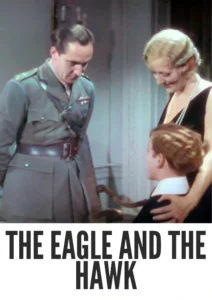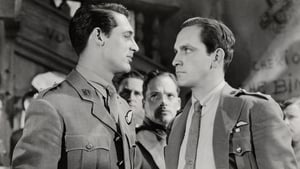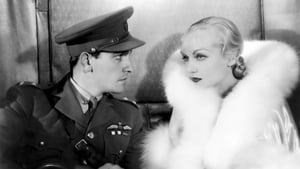Video Sources 0 Views
- Watch trailer
- The Eagle and the Hawk 1933 Colorized


Synopsis
Table of Contents
ToggleHigh-Flying Heroes: The Eagle and the Hawk (1933) in Stunning Color

Soar into the skies with The Eagle and the Hawk, a compelling war drama from 1933, now beautifully colorized for a breathtaking viewing experience. Starring Fredric March and Cary Grant, this film explores the psychological toll of World War I on fighter pilots. Perfect for aviation enthusiasts and fans of classic cinema, this HD download brings a poignant and visually stunning piece of cinematic history to your screen.
The Eagle and the Hawk Storyline: Above the Trenches
The Eagle and the Hawk tells the story of two American pilots serving in the British Royal Flying Corps during World War I. Jerry Young (Fredric March) is a seasoned and cynical pilot haunted by the realities of war, while Henry Crocker (Cary Grant) is a fresh-faced and idealistic newcomer eager to prove himself.As they navigate the dangers of aerial combat, their contrasting personalities and philosophies clash. Jerry becomes increasingly disillusioned with the glory of war, struggling with the moral implications of his actions. Henry, initially excited by the prospect of heroism, soon confronts the brutal realities of death and destruction. The film explores themes of camaraderie, disillusionment, and the psychological impact of war, culminating in a powerful and tragic climax. Ultimately, The Eagle and the Hawk is a thought-provoking and emotionally resonant drama that offers a glimpse into the lives of those who fought in the skies above the trenches.
Movie Cast
The film features a talented cast of actors who bring this dramatic story to life:
- Fredric March as Jerry Young
- Cary Grant as Henry Crocker
- Carole Lombard as The Beautiful Widow
Movie Genre
The Eagle and the Hawk falls into the genre of war drama, with a focus on aviation and the psychological impact of combat. Its exploration of moral ambiguities and the human cost of war sets it apart as a sophisticated and thought-provoking film.
Historical Context: Early Sound Cinema and WWI Reflections
Released in 1933, The Eagle and the Hawk reflects the growing disillusionment with war in the aftermath of World War I. The film was produced during a period when sound cinema was still in its early stages, and filmmakers were experimenting with new techniques to enhance storytelling. The Eagle and the Hawk stands out for its realistic portrayal of aerial combat and its unflinching examination of the psychological toll of war on its characters.
Colorization Details
This colorized version of The Eagle and the Hawk has been meticulously restored using modern digital techniques, enhancing the visual appeal while preserving the film’s original atmosphere of tension and drama. The colorization process involved carefully analyzing the grayscale tones of the original black and white footage and assigning appropriate colors to each scene. While the specific software used remains proprietary, the techniques employed included advanced algorithms for color palette selection and image enhancement. This painstaking process brings new life to the characters and settings, making the aerial sequences and dramatic moments even more impactful for modern audiences. While some may debate the merits of colorizing classic films, it introduces these films to a broader audience, ensuring their legacy for future generations.
Technical Details
- Director: Stuart Walker
- Screenplay: Bogart Rogers, Seton I. Miller
- Story: John Monk Saunders
- Cinematography: Arthur L. Todd
- Edited by: Ellsworth Hoagland
- Production Company: Paramount Pictures
- Distributed by: Paramount Pictures
- Runtime: 68 minutes
Technical Specifications
- Download Format: MP4
- Resolution: HD (1080p)
- Compatibility: Compatible with most devices, including smartphones, tablets, computers, and smart TVs.
Reviews and Critical Reception
The Eagle and the Hawk (1933) is praised for its realistic portrayal of aerial combat and its exploration of the psychological impact of war. The film’s strong performances and thought-provoking themes have made it a lasting classic of the war drama genre.
FAQs
- Q: What is The Eagle and the Hawk about?
- A: The Eagle and the Hawk is a war drama about two American pilots serving in the British Royal Flying Corps during World War I and their differing experiences with war.
- Q: Is The Eagle and the Hawk (1933) a well-known war film?
- A: The Eagle and the Hawk is a respected war film known for its realistic portrayal of combat and its psychological depth.
- Q: Is this version of The Eagle and the Hawk colorized?
- A: Yes, this version has been professionally colorized to enhance the viewing experience.
- Q: What makes The Eagle and the Hawk interesting for war film fans?
- A: The Eagle and the Hawk offers a realistic and thought-provoking look at the psychological impact of war on its characters.
- Q: What is the download format?
- A: The download format is MP4, which is compatible with most devices.
- Q: What resolution is the download?
- A: The resolution is HD (1080p), providing a high-quality viewing experience.
Download Now in HD!
Watch The Eagle and the Hawk Today!












